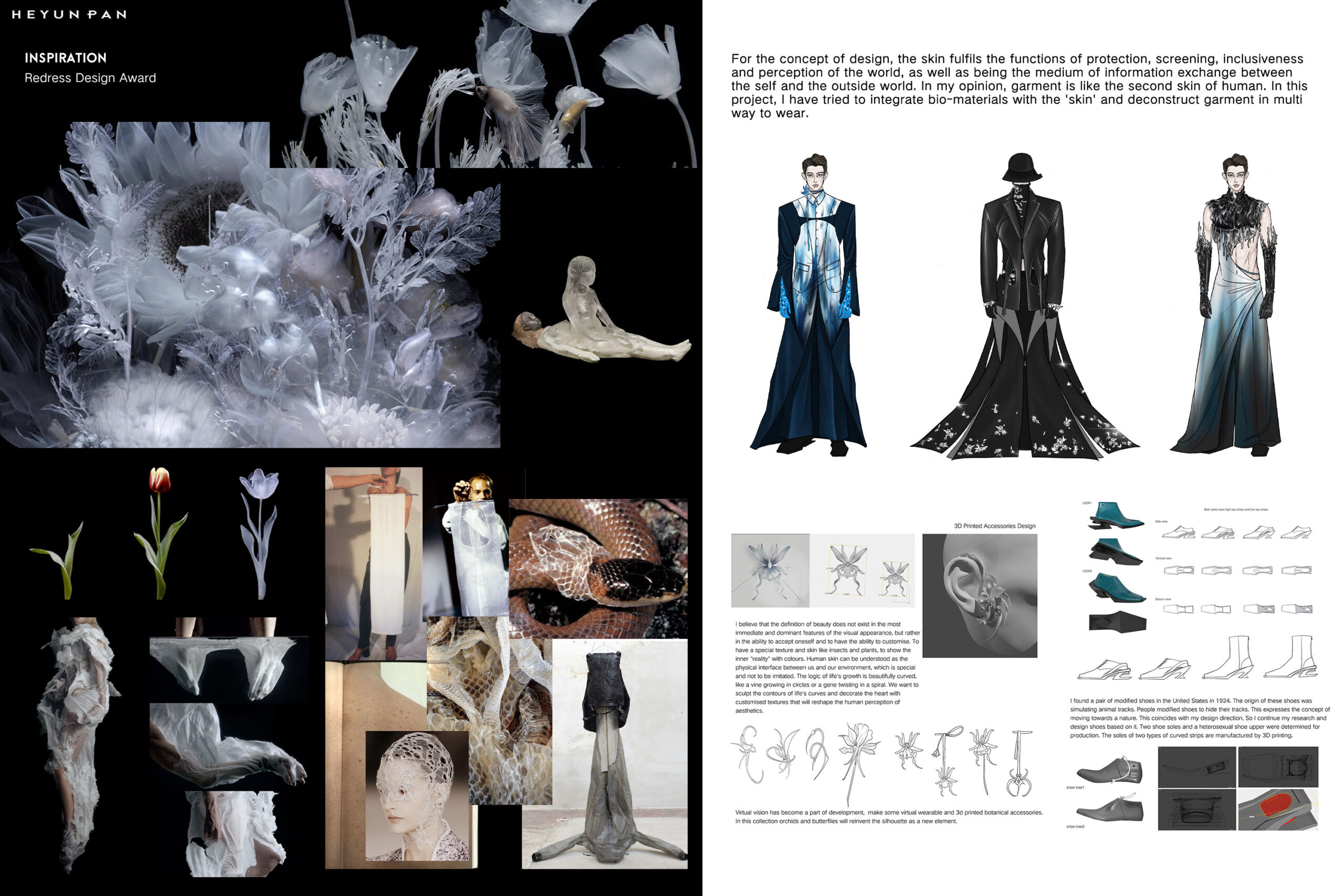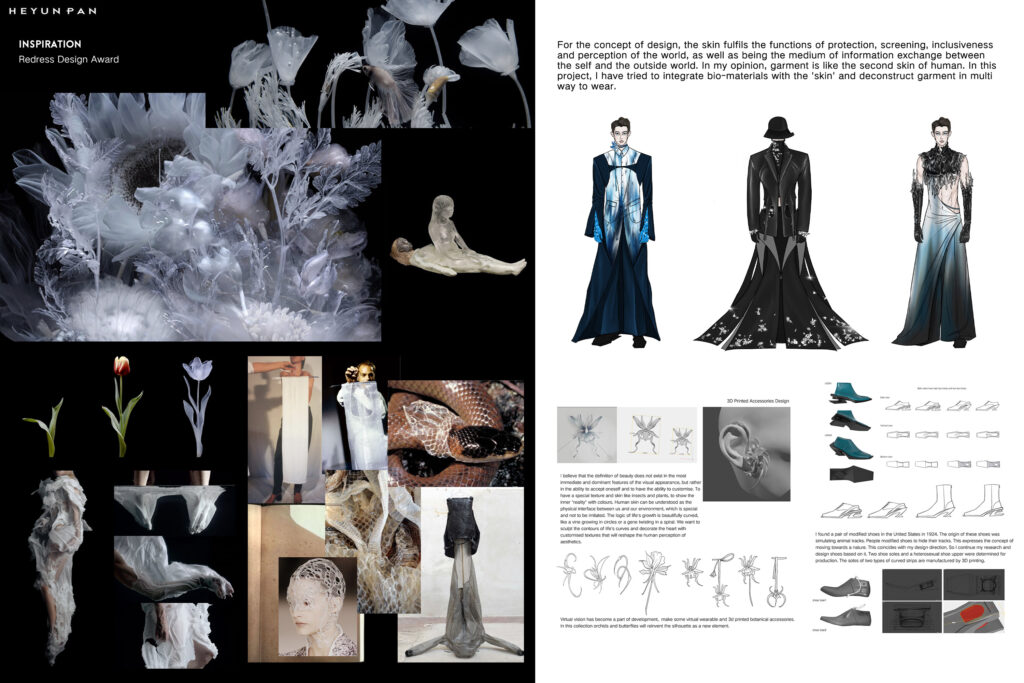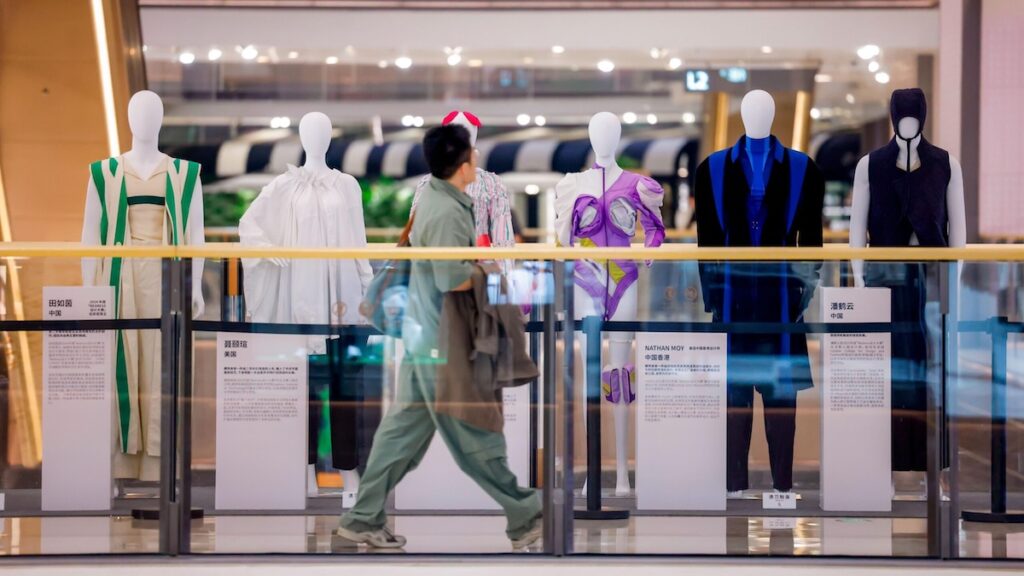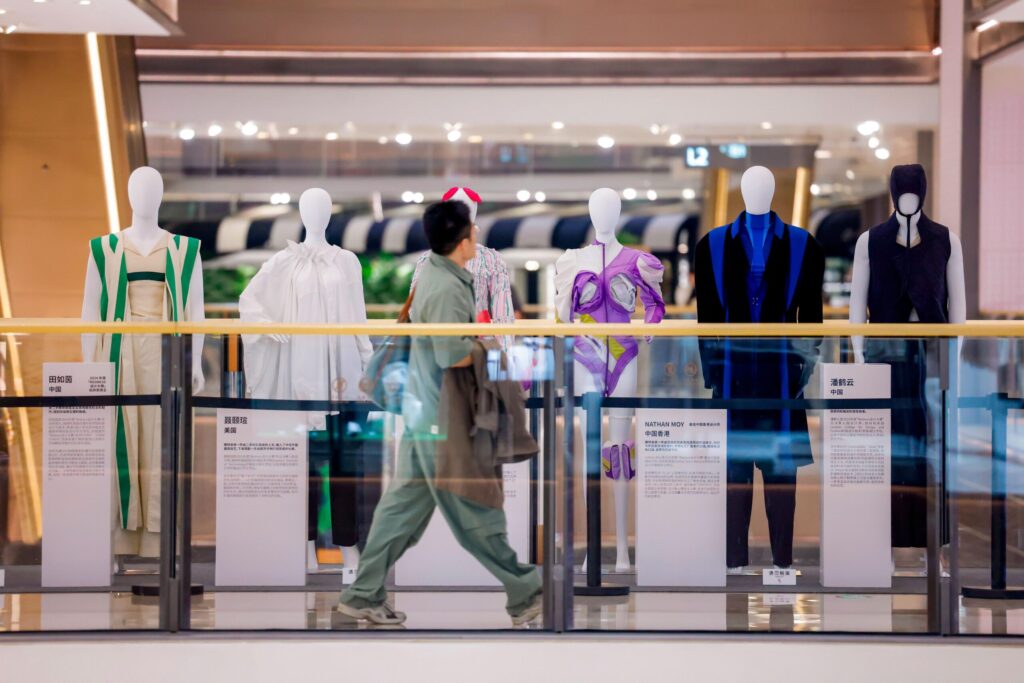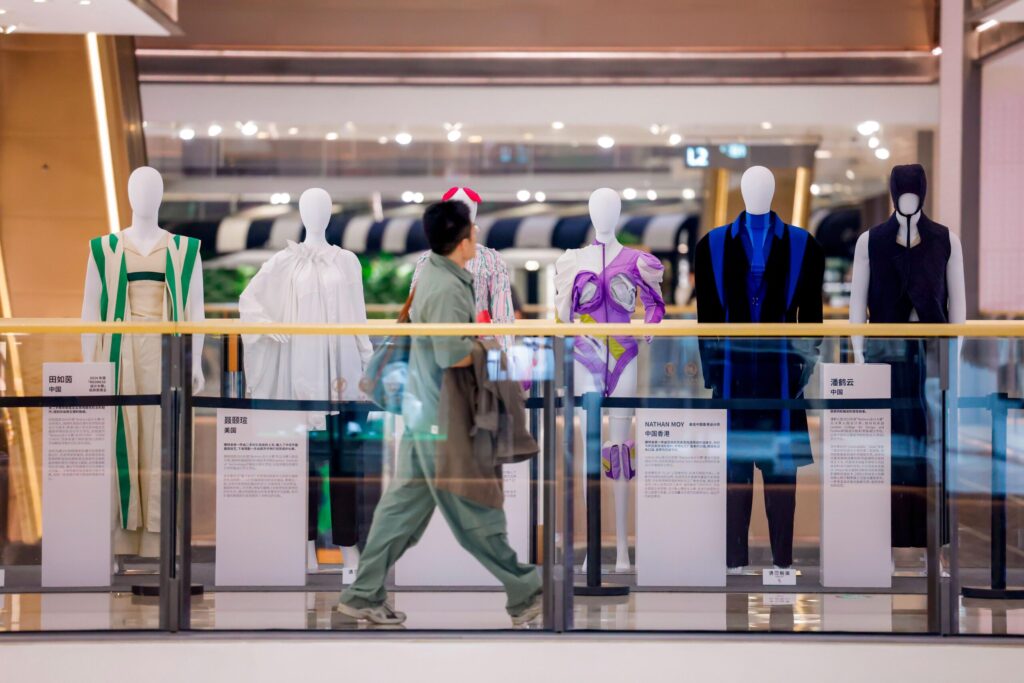Redress Design Award Collection
Heyun’s Redress Design Award collection, ‘Concealable Zone’, explores how garments are like a second skin for humans, with skin functioning as protection and screening to the world. The collection mainly uses recycled wool from digitally traceable supply chains, dyeing fabrics with natural recycled materials such as wood waste. Designing for low waste, Heyun incorporates laser-cutting with a strip pattern and projection-assisted tailoring, while his bespoke menswear craftsmanship centered on traditional British tailoring encourages longevity. A jacket is designed with a detachable vest, offering versatility in styling.

